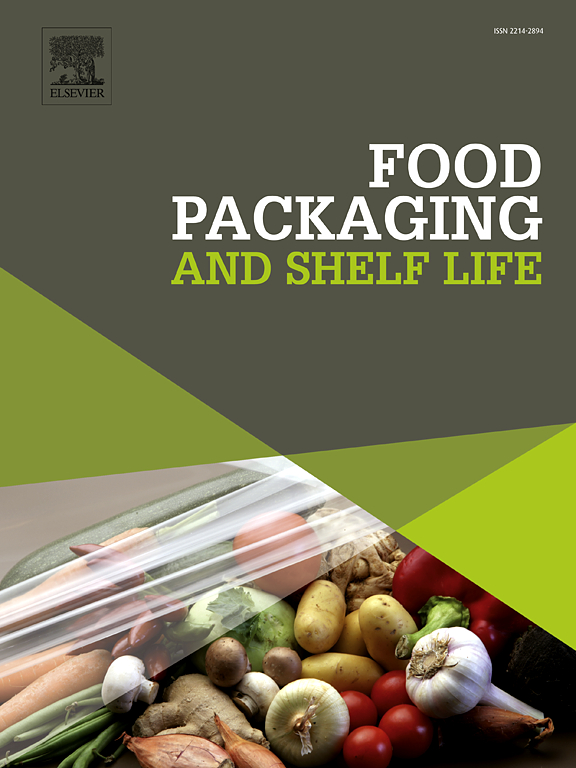Occurrence, release and risk assessment of metal elements in polylactic acid food containers from China
IF 10.6
1区 农林科学
Q1 FOOD SCIENCE & TECHNOLOGY
引用次数: 0
Abstract
Global consumption of polylactic acid (PLA) food containers is growing rapidly, and the release of chemicals from these containers poses a potential health risk to consumers. However, the available information on metal elements of these food containers is extremely limited. This study investigated the occurrence, release and risk assessment of metal elements in PLA food containers from China. The results showed that detection rates of 13 common metal elements were from 14.89 % to 100 % with average contents ranged from 0.002 to 181.91 mg/kg, respectively. Furthermore, Al, Ni, Cu, Cr, Zn and Pb were released to 4 % acetic acid (HAC) at average levels of 0.38–352.14 μg/kg under the 60℃ for 6 h. The average estimated daily intake (EDI) values were 0.0064–5.8690 μg/kg b.w. Based on the observed release levels, we estimated that there is potential risk in exposure to Pb. The degrees of metal elements leaching into food simulants were different with an order of in 4 % HAC solutions > 20 % ethanol > water > hexane. As expected, higher temperature and prolonged exposure accelerated the release of metal elements, even after a long exposure time (60°C for 10 days). In addition, multiped use aggravated releasing of metal elements, as well. In conclusion, it is worthwhile to evaluate and manage the risk of Pb exposure and the cumulative risks of multiple metal elements in PLA food containers.
中国产聚乳酸食品容器中金属元素的发生、释放及风险评价
聚乳酸(PLA)食品容器的全球消费量正在迅速增长,从这些容器中释放的化学物质对消费者构成潜在的健康风险。然而,关于这些食品容器的金属元素的现有信息非常有限。本研究调查了中国产PLA食品容器中金属元素的发生、释放及风险评价。结果表明,13种常见金属元素的检出率为14.89 % ~ 100 %,平均含量为0.002 ~ 181.91 mg/kg。Al、Ni、Cu、Cr、Zn、Pb在60℃条件下以平均0.38 ~ 352.14 μg/kg的浓度释放到4 %乙酸(HAC)中,释放时间为6 h。平均估计日摄入量(EDI)值为0.0064-5.8690 μg/kg b.w。根据观察到的释放水平,我们估计暴露于Pb存在潜在风险。金属元素浸出食品模拟剂的程度不同,顺序为:4 % HAC溶液>; 20 %乙醇>; 水>; 己烷。正如预期的那样,更高的温度和长时间的暴露加速了金属元素的释放,即使在长时间的暴露后(60°C 10天)。此外,多重使用也加剧了金属元素的释放。综上所述,对PLA食品容器中Pb暴露风险及多种金属元素累积风险进行评估和管理是有价值的。
本文章由计算机程序翻译,如有差异,请以英文原文为准。
求助全文
约1分钟内获得全文
求助全文
来源期刊

Food Packaging and Shelf Life
Agricultural and Biological Sciences-Food Science
CiteScore
14.00
自引率
8.80%
发文量
214
审稿时长
70 days
期刊介绍:
Food packaging is crucial for preserving food integrity throughout the distribution chain. It safeguards against contamination by physical, chemical, and biological agents, ensuring the safety and quality of processed foods. The evolution of novel food packaging, including modified atmosphere and active packaging, has extended shelf life, enhancing convenience for consumers. Shelf life, the duration a perishable item remains suitable for sale, use, or consumption, is intricately linked with food packaging, emphasizing its role in maintaining product quality and safety.
 求助内容:
求助内容: 应助结果提醒方式:
应助结果提醒方式:


